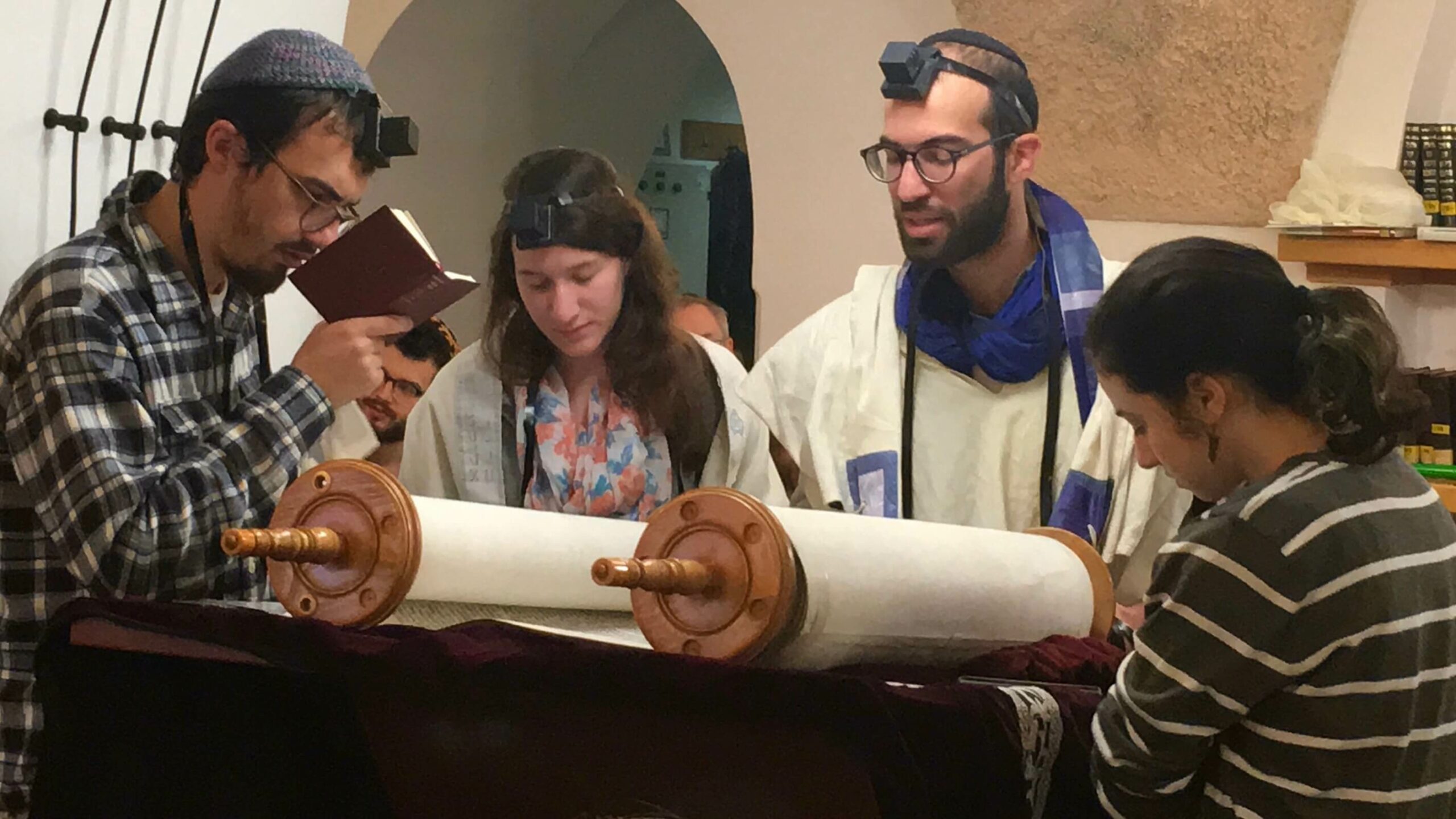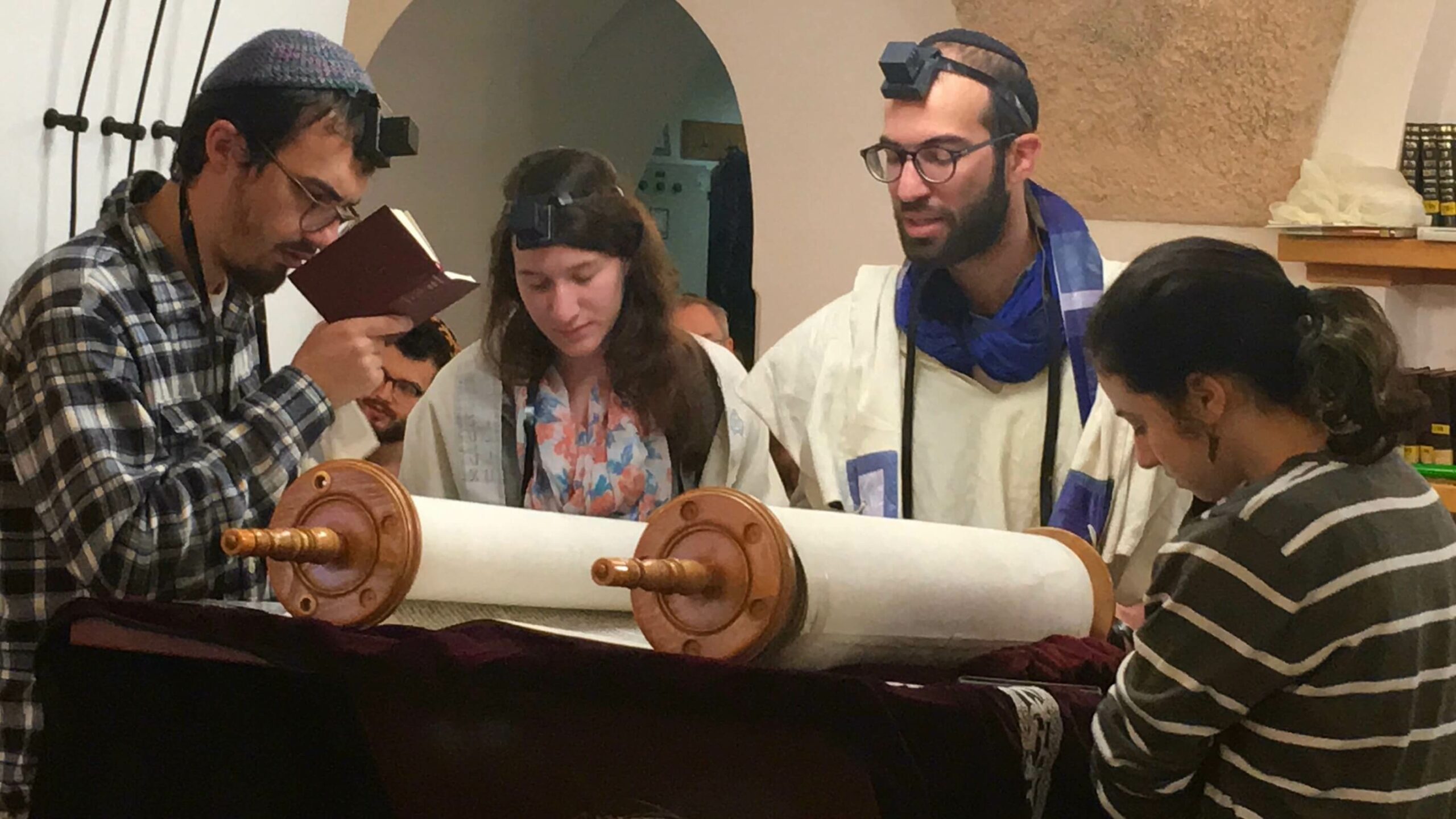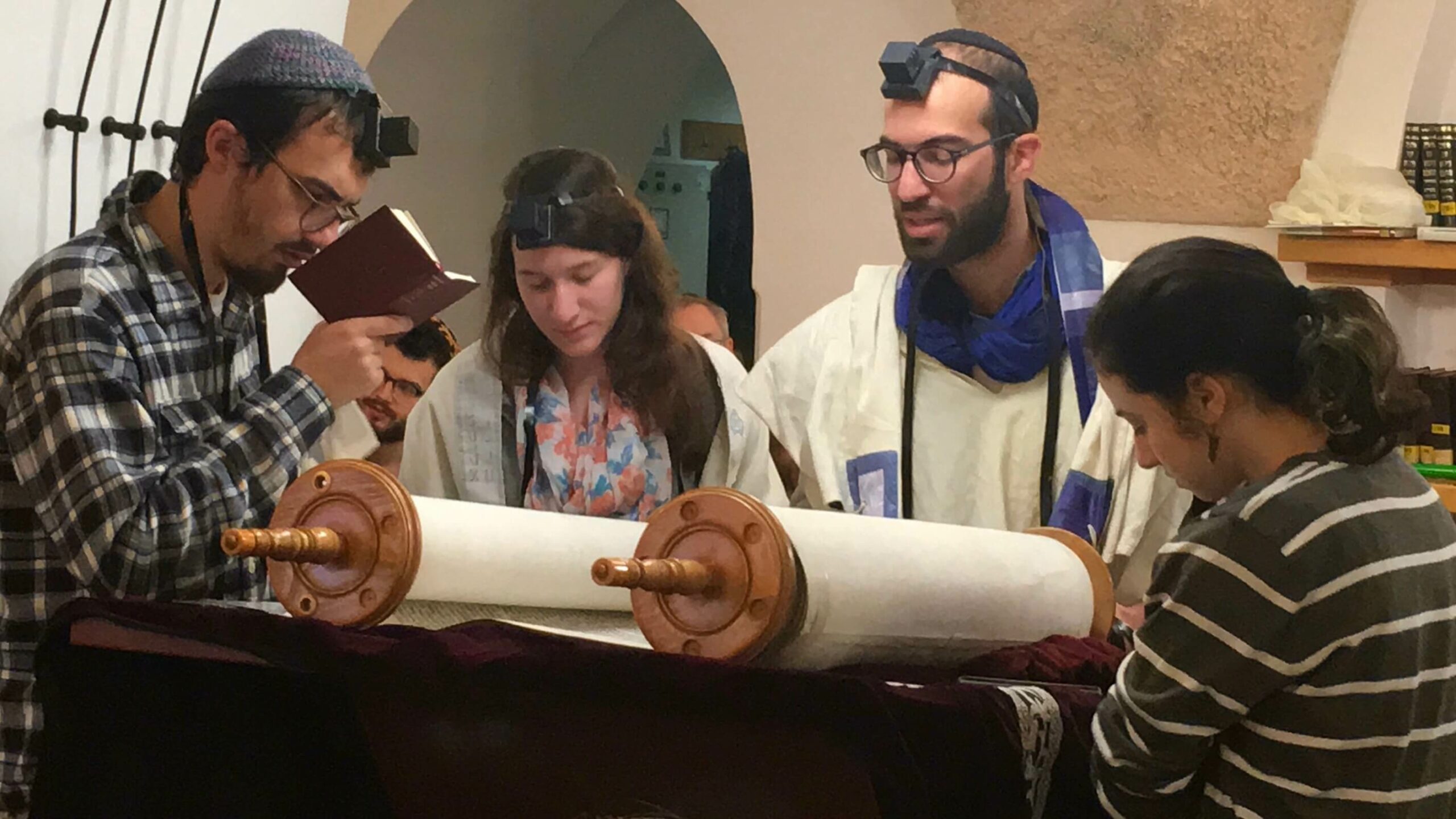

TORAH SPARKS (print friendly version)
Parashat Ki Tavo
Selihot begins on Saturday night September 21, 2019 | 21 Elul 5779
Annual (Deuteronomy 26:1-29:8): Etz Hayim p. 1140-1159; Hertz p. 859-873
Triennial (Deuteronomy 27:11-29:8): Etz Hayim p. 1146-1159; Hertz p. 864-873
Haftarah (Isaiah 60:1-22): Etz Hayim p. 1160-1164; Hertz p. 874-877
D’var Torah: You Cannot Hide
Dr. Joshua Kulp, Conservative Yeshiva Faculty & Rosh HaYeshiva
The first Jewish song I remember learning is not the Shema, Adon Olam or even Shalom Aleichem, although I surely knew all three as a young child (and maybe even earlier, as my mother claims that while still in the womb I would kick upon hearing my father belt out an amen from the bimah). The first song I remember was the one I learned at the Hebrew Academy in Margate and it went, “Hashem is here, Hashem is there, Hashem is truly everywhere. Up, down, right, left, here, there and everywhere is where He can be found.” The idea seems beautiful—God can be found everywhere. But, it has a scary side as well.
As the Israelites prepare to cross the Jordan into Canaan, this idea is brought home to them through a series of curses proclaimed by the Levites (Deuteronomy 27:14-26). One of the commonalities of these sins is that they are often performed in secret. The first curse specifically forewarns Israel not to sin in secret, “Cursed be anyone who makes a sculptured or molten image, abhorred by the Lord, a craftsman’s handiwork, and sets it up in secret.” People need less of a reminder not to sin in public—shame itself will usually be a deterrent. The ritual reminds people of what I learned in that children’s song—God is everywhere. You cannot hide.
R. Yitzchak illustrates this idea vividly in Bavli Kiddushin 31a: “R. Yitzchak said: One who transgresses in secret it is as though he pushed away the feet of the Shekhinah.” Sinning in secret is akin to saying “God is not in this place.” It removes the Shekhinah, God’s presence, from the world.
But rabbinic literature never makes things so easy. In a parallel passage in Hagigah 16a, the Talmud raises a counterpoint: “And is that so? But didn’t Rabbi Ela the Elder say: If a person sees that his inclination is overcoming him, he should go to a place where he is unknown, and wear black, and wrap himself in black, and do there what his heart desires, but let him not desecrate the Name of Heaven in public.” At times, Rabbi Ela says, it is actually better to sin in private than to sin in public!
The Talmud answers the difficulty by saying they refer to two different situations. When one can overcome one’s inclination to do the wrong thing, then intentionally doing so is pushing God out of the world. Why? Not caring about what one does in private and only caring about what one does in public is putting one’s image at the center of the world, rather than God or one’s highest values. It is as if one says: “My values themselves do not matter, what matters is that people believe that I have them.”
So when should one go to a place where one is unknown, hide one’s identity, and there do what one’s heart desires? When there is no choice. When one simply cannot do what one knows one is supposed to do. If we take this resolution literally, then we would say that such a person is not “pushing God out of the world” for God is already not in that place. Why not? Because there is no room for God when one is so overcome with one’s own desires. And when one’s faculties are so overwhelmed, finding God isn’t possible.
As a child, I was a bit frightened by that song, by the very notion that God is everywhere. You mean I can’t get away from God for even a moment? With this reading, there is now a hedge on that statement. As it were, God is not everywhere, for God is not in the places where I do not strive to live up to my highest values and be my best self. Our tradition says that I can go there from time to time, and that sometimes I must. Hopefully I will never hurt anyone else, and hopefully I’ll come out intact myself. But knowing that God awaits me whenever and wherever I try to be my best motivates me to keep doing so.
Parashat Ki Tavo Self-Study
Vered Hollander-Goldfarb, Conservative Yeshiva Faculty
The parashah describes ceremonies to be carried out in the land that God gives us. It also contains the blessings and curses that could befall us should we fail in our relationship with God while living in the land.
1) Moshe tells the people that when they bring the first of the land to the location that the LORD has chosen, they will tell the Kohen “I am saying today to the LORD your God that I have come to the land that the LORD swore to our ancestors to give us” (26:1-3). As only one generation physically enters the land, why does every generation says: “I have come to the land”?
2) In the third year [of the Shmita (Sabbatical) cycle] the extra tithe goes to the Levite, sojourner, fatherless and widow (26:12-15). The field owner is then supposed to state before the LORD that he has given it to these people, fulfilled the Mitzvot (commandments), not transgressed and not forgotten. Why might this be a Mitzvah that would be transgressed and/or forgotten?
3) “There [on Mount Eval] you shall build an altar …of stones; you shall not lift any iron tool upon them. You shall build the altar…of whole stones” (27:5-6). This event will take place alongside the writing of the Torah on plaster covered stones. Why do you think that we may not use iron tools on the stones of the altar? Why might we wish to use iron tools on it?
4) In the blessings that we are promised if we follow the Mitzvot, we are told “And all the people of the earth shall see that you are called by the name of the LORD and they shall be afraid of you” (28:10). How is that a blessing? What might be the manifestation of such a fear?
After 53 verses of describing the horrors that will befall us if we do not follow the Mitzvot, Moshe reminds the people of their 40 years in the desert: “Your clothing has not worn old upon you, your shoe has not worn old on your foot. You have not eaten bread, nor have you drunk wine…” (28:4-5). What is positive and what is negative in this kind of suspended existence?
D’var Haftarah: The Lamp of Redemption
Rabbi Mordechai Silverstein, Conservative Yeshiva Faculty
When a prophecy seems just a tad bit too utopian, commentators find it hard to determine exactly when these idyllic conditions are intended to happen. This week’s haftarah of consolation promises that the nation will shine with refulgent light which will attract all of the nations of the world: “Arise, arise for your light has dawned; The Presence of the Lord has shone upon you. Behold! Darkness shall cover the earth and thick clouds the peoples; but upon you the Lord will shine and His Presence be seen over you. And nations shall work by your light, kings by your shining radiance.” (60:1-3) When exactly was this prophecy intended to take place?
According to Rabbi David Kimche (12th century Provence), the prophet’s message was intended for the generation of Shivat Tzion, those who returned from Babylonian exile after the destruction of the First Temple, and its intent was to encourage the returnees that all would ultimately be well with them. Kimche records another interpretation, likely that of Rabbi Avraham Ibn Ezra (11th century Spain), who from his reading of events did not think that this promise had yet occurred. Consequently, he thought that this prophecy described a vision of the World-to-Come.
In a midrash from the Talmudic period, Rabbi Yohanan teaches a rather obscure parable to explain this verse: “This is like a person who decided to start his journey at sundown. A fellow traveler came along and lit his lantern and it promptly went out. Another came along and lit his lantern and it too went out. The first traveler came to the conclusion that from here on in he would wait until the light of morning before continuing his journey.” (Pesikta d’Rav Kahana 19:3 Mandelbaum ed. p. 320) The hard thing about interpreting parables is making the proper associations between the characters in the parable and who they are intended to symbolically represent. Only when we can do that, will the parable serve our purposes and offer us a meaningful explanation.
It just so happens that a later midrash uses this same parable and offers the following explanation: “So, Israel, when it was enslaved in Egypt, Moshe arose and redeemed them; they again became enslaved by Babylonia, and Daniel and his friends redeemed them, but again they became enslaved at the hands of the Persians. Mordechai and Esther came along and redeemed them, only for them to again become enslaved at the hands of the Greeks. The Hashmonaim (the Maccabees) arose and redeemed them this time, but again they became enslaved by wicked Edom (the Romans). After all of this, they were no longer willing to settle for a flesh and blood redeemer. Only the “light” of the Holy One Blessed be He would do.” (adapted from Midrash Tehillim 36:6 Buber ed. p. 250)
This parable, then, expresses disappointment that each time a human redeemer came along and “lit a lamp” (redeemed them), the redemption proved to be temporary, until some new trauma arose. These events spiritually and physically exhausted the people, leaving them to yearn for the ultimate redemption. The question for us becomes whether we should adopt Rabbi Yohanan’s attitude of waiting for the “ultimate light” to come or should we gather up the light we have been given to inspire redemptive behavior. This light, as much or as little as we have been granted joins us with God, and can provide us with the strength and the energy we need to carry on the mission of being God’s people and making the world we live in worthy of being God’s world.








